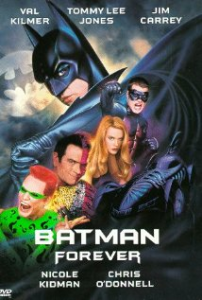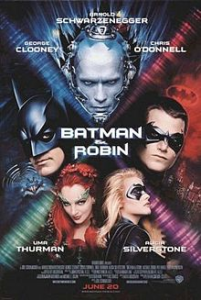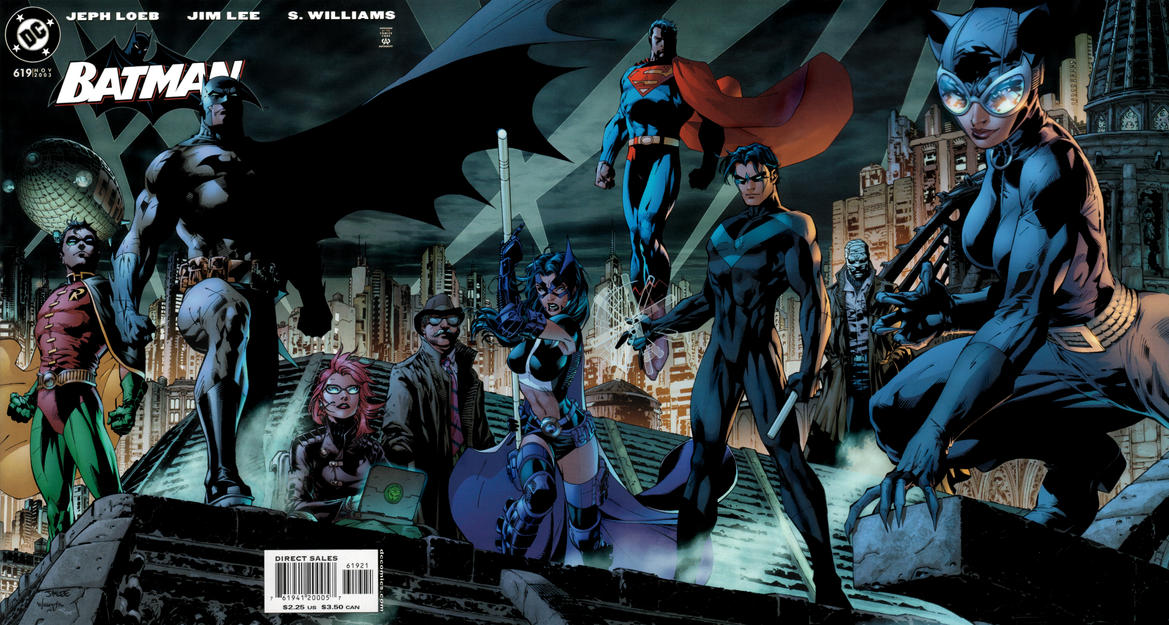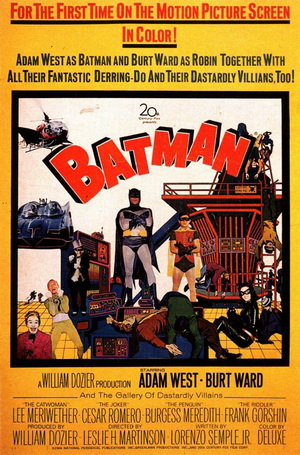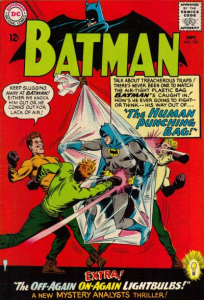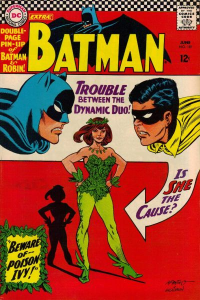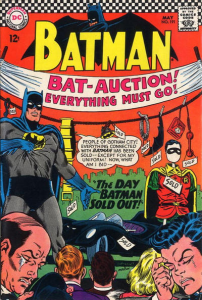After Tim Burton brought to the screen a surreal, alternative version of the Batman universe with echoes of the 1940s, director Joel Schumacher picked up the mantle and drove this cinematic franchise into the Silver Age. Leaving behind the grim gravitas of the first two movies, Schumacher kept the notion of treating the series as a dreamlike, highly stylized fantasy, yet made it a comparatively brighter one – or better yet, neon-lit. Everything became even kookier-sounding and kinkier-looking (yep, nipples in the batsuit). Heroes and villains were no longer treated as tragic figures, but rather as colorful toys to be thrown against each other in over-the-top action scenes.
Less of an aspiring auteur than Burton, Joel Schumacher went for openly shallow popcorn entertainment. That said, these films have an unmistakable visual style, redesigning Gotham City with utterly insane architecture and lighting. They have a cartoonish feel that isn’t that far off from what Warren Beatty did with Dick Tracy.
With its ludicrous plot, fetishistic overtones, and ham-fisted pop psychology, 1995’s Batman Forever feels less like a departure than like a slapstick extension of its predecessor. Schumacher delivers an unpretentious superhero blockbuster full of actors in wacky suits cheerfully chewing the scenery – not one, but both villains seem to be mimicking Jack Nicholson’s rendition of the Joker. By then, The Mask had already proven that Jim Carrey could successfully bring a comic book to life, so Schumacher appears to have let him go completely wild as the Riddler (‘Joygasm!’). Although nominally playing Two-Face, Tommy Lee Jones instead just struggles like hell to out-Carrey his co-star. Meanwhile, Chris O’Donnel tries to hip up the film as Robin the Boy Wonder, despite being clearly in his twenties, and Nicole Kidman is brought in to continue Batman’s strand of blond, milky skinned love interests (albeit the horniest of the lot). The biggest wasted opportunity is Val Kilmer’s uncharismatic performance in the leading role… since Kilmer is at his best when channeling Elvis Presley (Top Secret!, True Romance), he totally should have done Batman in Elvis-mode!
Batman & Robin further amps up the camp by having the Dynamic Duo produce automatic ice skate blades from their boots in order to fight a ‘hockey team from Hell’ (that’s the first 10 minutes), filling the dialogue with *even more* sexual innuendo, and introducing the infamous Bat-credit card (Expiration date: Forever). The result is not so much a movie as an LSD trip. According to your tastes and expectations, it can be either unwatchable dreck, an amusing live-action cartoon, or hysterically so-bad-it-is-good. Arnold Schwarzenegger clunks around in a Mr. Freeze costume while mispronouncing non-stop cold-related puns and Uma Thurman, overacting like a maniac as Poison Ivy, seems to be totally in on the joke (unlike Alicia Silverstone’s uninspired Batgirl). And say what you want, George Clooney was born to play Bruce Wayne. While Burton gave the series a quasi-horror vibe sprinkled with absurdist black comedy, a la Gremlins, Schumacher shoots for a Looney Tunes-esque Gremlins 2. That said, in places Batman & Robin still wants to be taken seriously, leading to some jarring shifts in tone (in the Schwarzenegger canon, this should sit next to Last Action Hero). The film emanates both a faux-rebel ’90s attitude and the feel of a dumbed down kids movie in a franchise that from the beginning also tried to appeal to a relatively older crowd, all the while being packed full of way too many useless characters and gimmicks whose only purpose seems to be to sell merchandise – sigh, I could be describing the Star Wars prequels.
Still, even if you think Joel Schumacher went too far in terms of silliness, you may appreciate his overall approach of bombastic visuals and larger-than-life, leave-your-brain-at-the-door spectacle. In that case, Hush is what you want. This story of a mysterious villain who knows all the right buttons to push in order to mess with the Dark Knight was conceived by Jeph Loeb like a Hollywood mega-blockbuster in comics form, offering one major ‘Holy shit!’ moment in practically every issue (like Bruce Wayne revealing his secret identity to Catwoman, or Jason Todd showing up alive after being thought dead for 15 years).
Jeph Loeb sure knows how to write crowd-pleasing, dumb entertainment – after all, he worked on the cheesy crypto-fascist Schwarzenegger vehicle Commando, on the adorably ridiculous comedy Teen Wolf, and on the shockingly popular TV show Smallville. In the world of comics, Loeb is known for writing with his artists in mind, playing to their strengths and providing plenty of spectacular splash pages for them to shine. Thanks to him, superstar artist Jim Lee got to draw, for the first time, pretty much every fan-favorite member of Batman’s cast. Indeed, surely a great deal of the huge success of Hush derived from Lee’s luscious pages, with inks by Scott Williams and colors by Alex Sinclair.
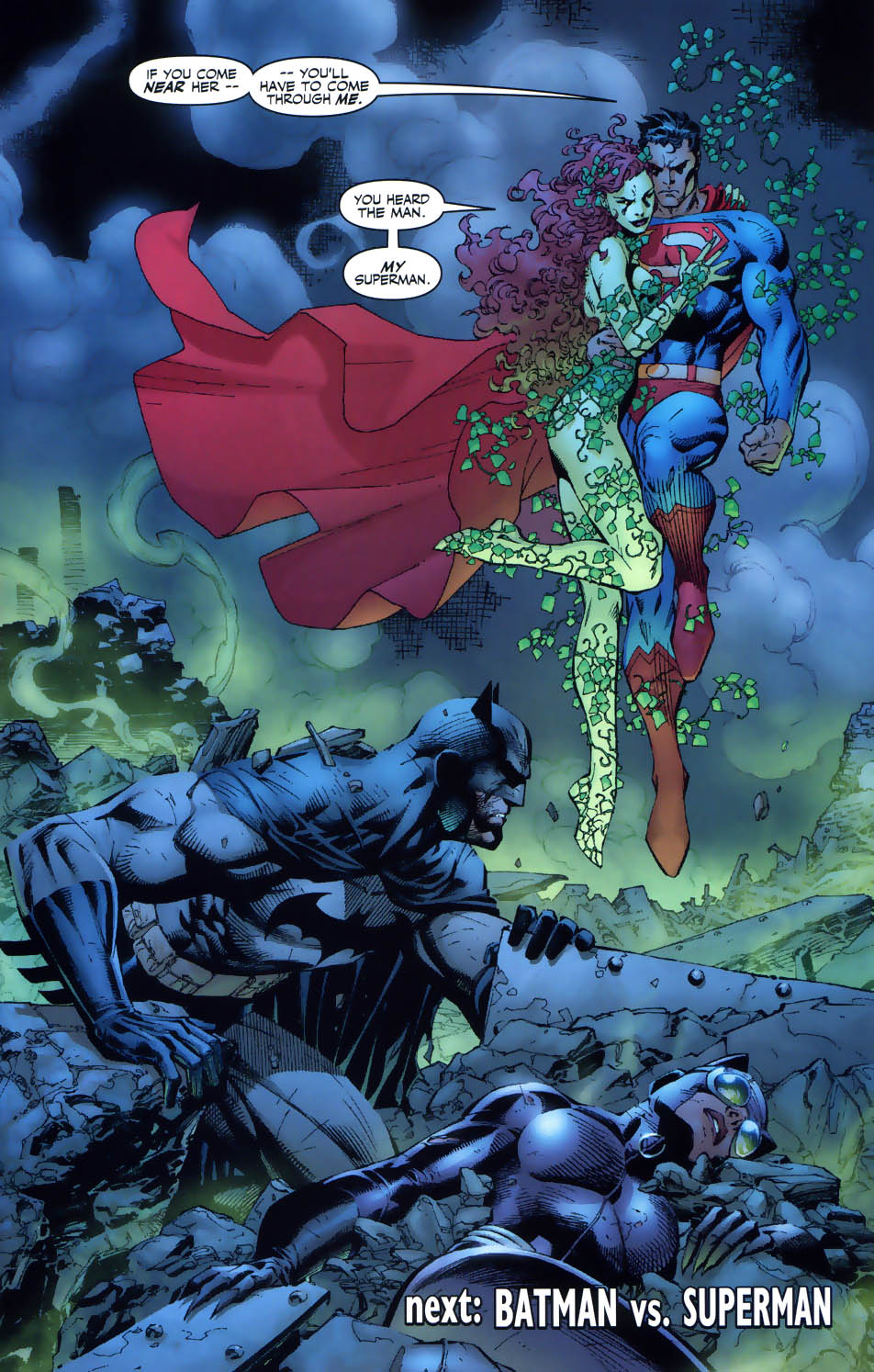 Batman #611
Batman #611
The other thing to keep in mind about Jeph Loeb is that his writing, even in the 1990s (when I really enjoyed his stuff, especially Superman: For All Seasons and Challengers of the Unknown Must Die!), has always been to a great degree based on echoing scenes and lines from iconic works and trying to regain their power through either explicit or subliminal nostalgic resonance. His first Batman story, ‘Choices,’ revisited a famous exchange from the film To Have and Have Not (‘Were you ever bit by a dead bee?’). The excellent The Long Halloween and the sequel Dark Victory seemed to pillage every crime movie Loeb had ever seen and to channel them through the Batman universe, including at least The Godfather, The Godfather II, Chinatown, Silence of the Lambs, Miller’s Crossing, The Untouchables, Once Upon a Time in America, White Heat, Scarface, Little Caesar, and Taxi! And to be fair, the mood of the originals does somehow rub off by osmosis, so that whether you recognize the references or not, the result still feels like a great crime yarn!
With Hush, Jeph Loeb adopted a more inward-looking variation of this strategy. He now dug into the Dark Knight’s own history by remaking Batman comics’ greatest hits, like in this homage to a classic Denny O’Neil story:
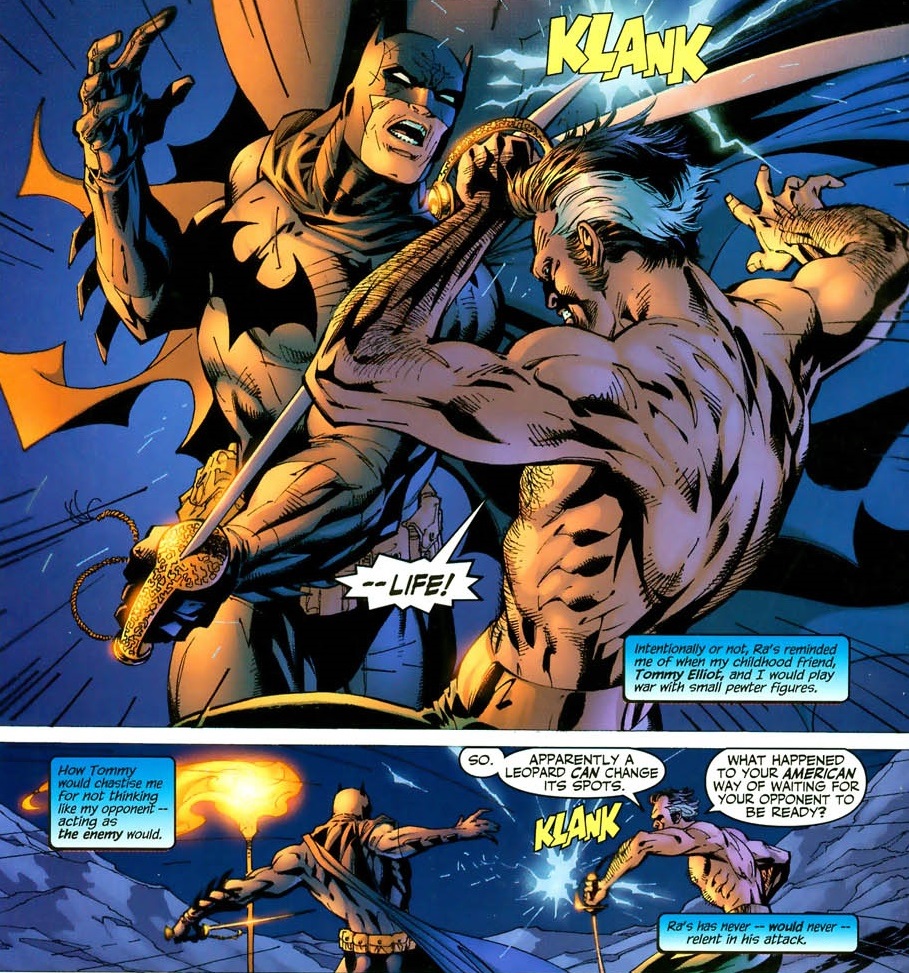 Batman #616
Batman #616
Although indulging in obscurer references, arguably the same can be said of Grant Morrison’s work starting with Batman and Son. Gone are the days of Arkham Asylum’s gloomy psychological horror: 21st century Morrison writes the Caped Crusader on hallucinated overdrive, cramming each issue with crazy ideas! These are pure superhero comics, goddamn it! Morrison’s run is full of explosive mashups of familiar concepts, like an army of Man-Bat ninjas or bizarre drugs spliced from Hugo Strange’s monster serum, Bane’s venom, and Joker’s toxin. It reads like a hipper, smarter version of what Joel Schumacher was initially aiming for.
Granted, it can be confusing (yet rewarding) to follow Morrison’s extremely fast-paced, non-linear, intricate plots… but for all the postmodern intertextual metafiction, this is above all frenetic fun, so if you want you can just sit back and enjoy the ride:
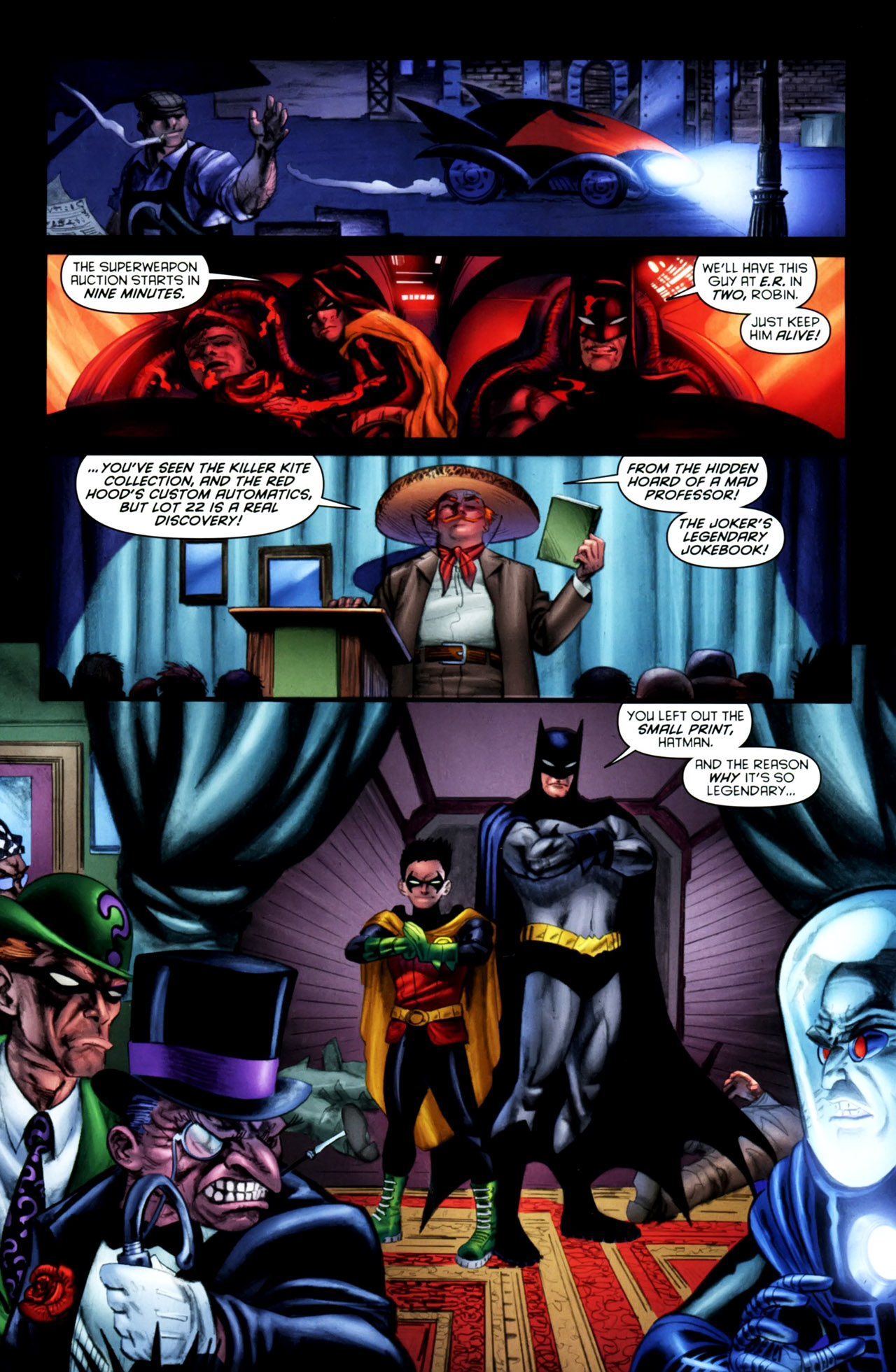 Batman #700
Batman #700
As far as ’90s-style action goes, however, nothing beats Chuck Dixon’s original run on Nightwing.
This series followed the exploits of Dick Grayson in his twenties (unlike Chris O’Donnell, he realized he was too old to be Robin, and so called himself Nightwing) and saw him move to Blüdhaven. Gotham’s neighboring city, Blüdhaven was somehow even more of a corrupt, crime-ridden cesspit than Batman’s home turf – as Dixon’s narration put it, ‘If it’s too coarse or too vile or too awful for Gotham, it winds up here.’ Scott McDaniel’s twisted designs projected a decadent industrial city that looked every bit as eccentric as Schumacher’s Gotham, albeit with less homoerotic statues.
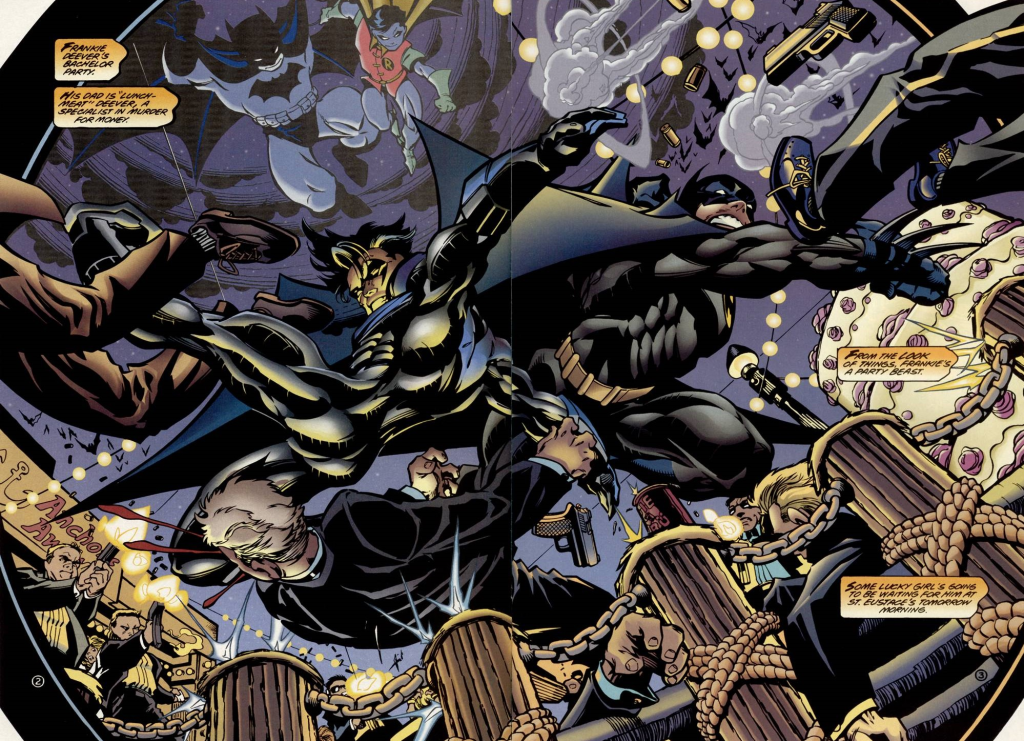 Nightwing #13
Nightwing #13
With a hardboiled, sleazy exploitation vibe, at first Chuck Dixon treated Nightwing as a B-movie version of Batman, including shamelessly lame villains like a gangster with his head facing backwards and a vigilante who walked around with a domino mask and a baseball bat calling himself Nite-Wing, much to everyone’s confusion! In his last couple of years on the title, Dixon shifted gears by having Dick Grayson join the police force and turned Nightwing into a more grounded crime series. Meanwhile, he really embraced the potential of the ongoing serial format to flesh out the supporting cast, engaging in some long-term plotting and characterization while dangling multiple threads. A detail set up in the very first issue did not pay off until issue 59!
Of course, this is not to say that there weren’t plenty of thrills and rewards along the way… This was a roller coaster of a comic, especially in the first 40 issues, drawn by Scott McDaniel. Getting the most out of McDaniel’s energetic pencils, Chuck Dixon made sure almost every page featured Nightwing acrobatically jumping around or kicking ass. And when things sometimes had to slow down, McDaniel still managed to make even scenes of people standing there talking look urgent and dynamic:
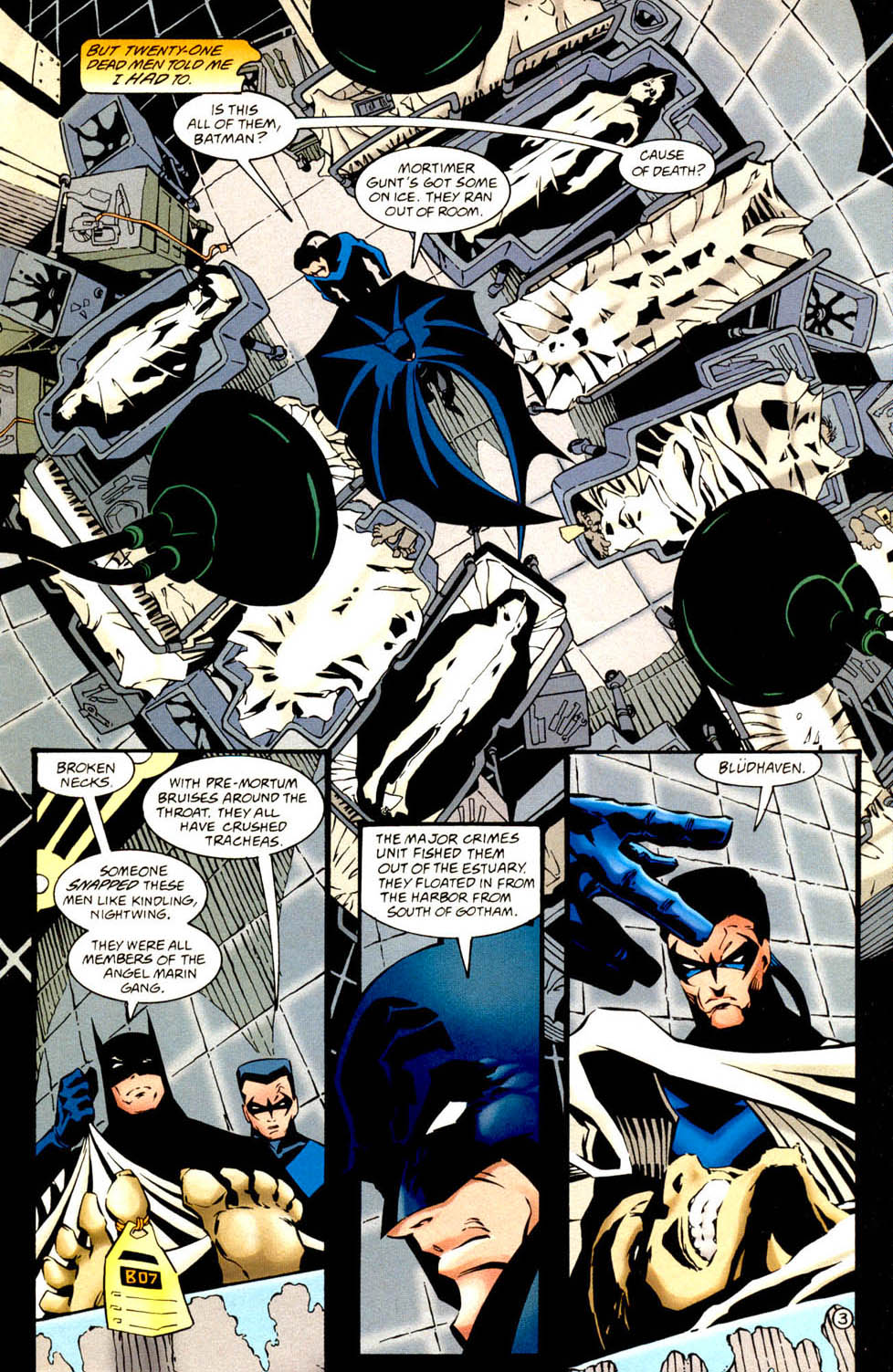 Nightwing #1
Nightwing #1
Finally, as maligned as Batman & Robin is, I’m sure there are some who’ve retrospectively come to dig Joel Schumacher’s multicolored zaniness. Yet if you feel like a lighthearted, tongue-in-cheek, kitsch comedy featuring the Caped Crusader and his foes, you are still better off watching the Austin Powers-like Batman: The Movie. It is much more charming and tonally consistent – plus you get to see Adam West’s Batman, in his own weird way, kind of put an end to the Cold War 25 years before the fact!
If it turns out 1966’s Batman is indeed your favorite Bat-film, then finding similar comics shouldn’t prove too hard. The ongoing Batman ’66 series and the spinoff Batman ’66 Meets The Green Hornet are set in the same continuity as the old movie and TV show. And, of course, you can always read the actual stories from the mid-sixties, which are quite close in spirit…
NEXT: Christopher Nolan.

